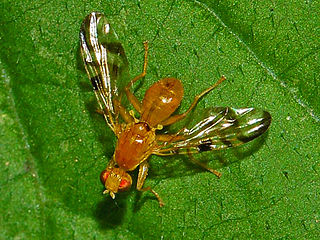 W
WAcidia cognata is a species of fly in the family Tephritidae.
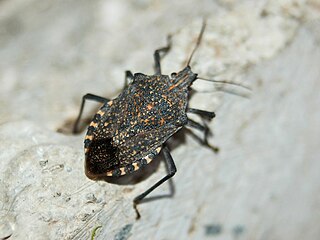 W
WApodiphus amygdali is a species of shield bug belonging to the family Pentatomidae, subfamily Pentatominae.
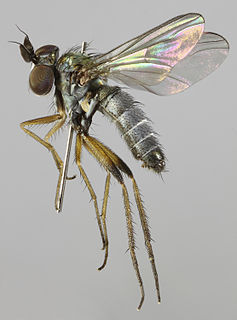 W
WArgyra vestita is a species of fly in the family Dolichopodidae. It is distributed in Europe.
 W
WBrachyopa bicolor is a European species of hoverfly.
 W
WCheilosia grossa is a widespread European species of hoverfly. Adults can be found in spring on sallow catkins and the larvae tunnel in the stems of various thistle species.
 W
WCheilosia mutabilis is a European species of hoverfly. Like most Cheilosia it is black, and because of this may often be overlooked as a hoverfly. It is little recorded, and is considered rare and scarce throughout most of its range.
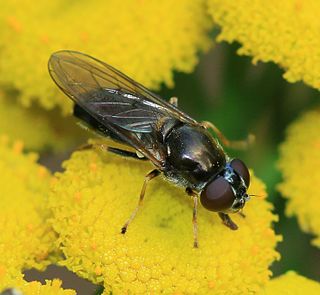 W
WCheilosia scutellata is a Palearctic hoverfly.
 W
WChrysogaster solstitialis is a European species of hoverfly.
 W
WChrysotus neglectus is a species of fly in the family Dolichopodidae. It is found in the Palearctic.
 W
WDasysyrphus albostriatus is a Palearctic species of hoverfly.
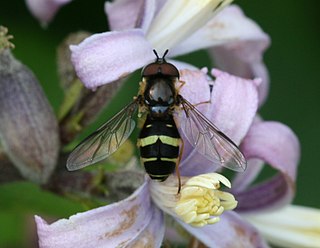 W
WDasysyrphus tricinctus is a European species of hoverfly in the genus Dasysyrphus, a member of the family Syrphidae. It is found across Europe, although reported in highest density from the British Isles and Scandinavia. While not uncommon it is generally only seen in modest numbers, typically in lowland woods with peak numbers in late May and early June and again in late August and early September.
 W
WDidea alneti is a Holarctic species of hoverfly.
 W
WDinera carinifrons is a species of fly in the family Tachinidae. It is found in Europe and Asia.
 W
WDinera ferina (Fallen) is a species of fly in the family Tachinidae. In June 2018, the Bulletin of Insectology wrote that Dinera ferina was "confirmed to be a parasitoid of larvae of the two Italian Platycerus species, Platycerus caprea and Platycerus caraboides (L.) ."
 W
WDinera grisescens is a species of bristle fly in the family Tachinidae. It is found in North America and Europe.
 W
WEriozona syrphoides is a European species of hoverfly. A large, bee mimic The thorax has black hairs in the middle and yellow or reddish hairs on the front and hind margins. The scutellum is white to yellow with yellow hairs. The abdomen has white hairs in front, black in the middle and has red hairs at the tip. The wing has a dark patch. The habitat is Picea, Abies forest. It is arboreal descending to feed on white umbellifers, Centaurea, Cirsium, Crataegus, Epilobium, Hypericum, Ranunculus, Sambucus nigra, Sorbus aucuparia, Succisa, Valeriana. It ranges from Fennoscandia south to France and from Ireland eastwards through Central Europe and northern Italy into European Russia and the Russian Far East and on through Siberia to the Pacific coast. The larva feeds on aphids.
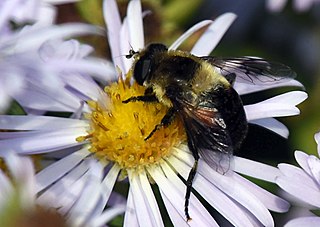 W
WEristalis anthophorina, the orange-spotted drone fly, is a species of syrphid fly with a Holarctic distribution. It is a common fly in wetlands, including bogs, fens, and woodland pools. In North America, it occurs throughout much of Canada and primarily in the northern parts of the United States. It may be introduced in North America. It reaches around 15 mm (0.6 in) in length.
 W
WEristalis similis is a European species of hoverfly.
 W
WEumerus sabulonum is a species of hoverfly, from the family Syrphidae, in the order Diptera.
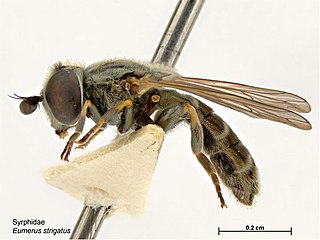 W
WEumerus strigatus or lesser bulb fly is a species of Hoverfly, from the family Syrphidae, in the order Diptera.
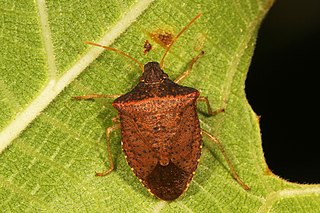 W
WEuschistus obscurus, the pale-lined stink bug, is a species of stink bug in the family Pentatomidae. It is found in the Caribbean Sea, Central America, and North America.
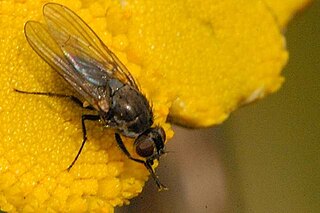 W
WFannia lepida is a fly species in the Fanniidae family. This species is smaller and more slender than the house fly, Musca domestica, and is similar in appearance to the lesser house fly, Fannia canicularis. It is found in the Palearctic. For identification see
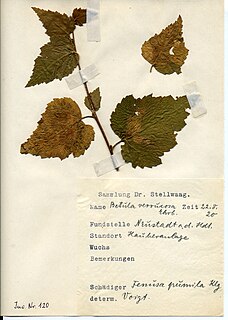 W
WFenusa pumila, the birch leafminer, is a species of sawfly in the family Tenthredinidae. It is found in Europe and has been introduced into North America.
 W
WThe Hessian fly or barley midge, Mayetiola destructor, is a species of fly that is a significant pest of cereal crops including wheat, barley and rye. Though a native of Asia it was transported into Europe and later into North America, supposedly in the straw bedding of Hessian troops during the American Revolution (1775–83), thus the origin of its common name. There are usually two generations a year but may be up to five. In the spring the dark-coloured female lays about 250 to 300 reddish eggs on plants, usually where the stems are covered by leaves; the larvae feed on the sap and weaken the plants so that they cannot bear grain.
 W
WMallota cimbiciformis is a Palearctic hoverfly.
 W
WMegachile albisecta is a species of leafcutter bee in the family Megachilidae. This species is present in the Southern Europe, in the East Palaearctic ecozone and in North Africa.
 W
WMelangyna cincta is a European species of hoverfly. This species has a muddled taxonomic history. Stubbs & Falk treat it as a member of the genus Melangyna. Other sources place it in Meligramma or Fagisyrphus.
 W
WMeligramma guttata is a Holarctic species of hoverfly.
 W
WMintho rufiventris is a European species of fly in the family Tachinidae.
 W
WMuscina stabulans is a fly from the family Muscidae.
 W
WNemotelus nigrinus, the all-black snout, is a Holarctic species of soldier fly.
 W
WOrthetrum brachiale, the tough skimmer or strong skimmer, is a species of dragonfly in the family Libellulidae. It is found in Angola, Benin, Botswana, Burkina Faso, Cameroon, Central African Republic, Chad, Comoros, the Republic of the Congo, the Democratic Republic of the Congo, Ivory Coast, Egypt, Equatorial Guinea, Ethiopia, Gabon, Gambia, Ghana, Guinea, Kenya, Liberia, Madagascar, Malawi, Mali, Mauritania, Mauritius, Mozambique, Namibia, Niger, Nigeria, Réunion, Seychelles, Sierra Leone, Somalia, South Africa, Sudan, Tanzania, Togo, Uganda, Zambia, Zimbabwe, possibly Burundi, and possibly São Tomé and Príncipe. Its natural habitats are subtropical or tropical moist lowland forests, dry savanna, moist savanna, subtropical or tropical dry shrubland, subtropical or tropical moist shrubland, shrub-dominated wetlands, swamps, intermittent freshwater lakes, freshwater marshes, and intermittent freshwater marshes.
 W
WOrthonevra nobilis is a species of hoverfly.
 W
WOxycera pygmaea, the pygmy soldier, is a European species of soldier fly.
 W
WPachyprotasis antennata is a Palearctic species of sawfly.
 W
WParagus albifrons, is a species of hoverfly. It is found from southern Europe across to eastern Asia.
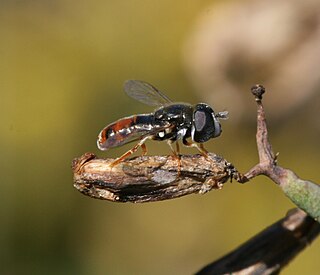 W
WParagus tibialis, is a species of hoverfly found in many parts of Europe and North Africa. It has a preference for drier areas and its larvae feed on root aphids.
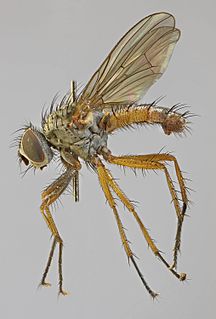 W
WPegomya bicolor is a species of fly in the family Anthomyiidae. It is found in the Palearctic. For identification see
 W
WPhaonia incana is a fly from the family Muscidae. It is found in the Palearctic.
 W
WPlatycheirus ambiguus is a small widespread species of hoverfly found across the Palearctic from Ireland to Japan. A spring species found in flight in April and May, it visits spring-flowering trees and shrubs; e.g., Prunus spinosa in deciduous woodland and scrub.
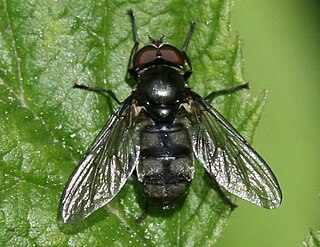 W
WPortevinia maculata is a European species of hoverfly. The adults can be found around ramsons when the plants are in flower (May–June). The larvae tunnel through and overwinter in the bulbs of this plant.
 W
WRomalea is a genus of grasshoppers native to the south-eastern and south-central United States. It is monotypic with a single species, Romalea microptera, known commonly as the eastern lubber grasshopper, Florida lubber, and Florida lubber grasshopper. It is the most distinctive grasshopper species within the south-eastern United States, and is well known both for its size and its unique coloration. It can reach nearly 3 inches (8 cm) in size.
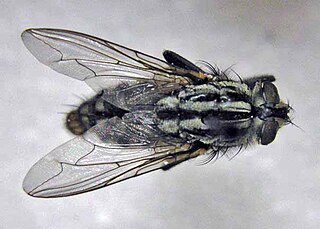 W
WSarcophaga haemorrhoidalis, also known as the red-tailed flesh fly, is a fly in the Sarcophagidae family. This fly often breeds in carrion and feces, making it a possible vector for disease. The larvae of this species can cause myiasis, as well as accidental myiasis. It is potentially useful in forensic entomology.
 W
WSciapus contristans is a species of long-legged fly in the family Dolichopodidae.
 W
WTenthredo balteata is a Palearctic species of sawfly.
 W
WTenthredo moniliata is a sawfly species belonging to the family Tenthredinidae.
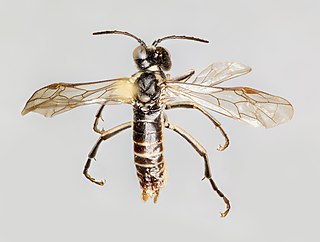 W
WTenthredo obsoleta is a Palearctic species of sawfly.
 W
WThelaira nigripes is a species of fly in the family Tachinidae first described by Carl Fredrik Fallén in 1817. It parasitizes moths such as Arctia caja by laying eggs in the larvae that eventually kill the host.
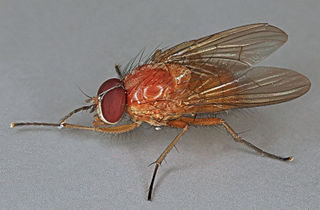 W
WThricops diaphanus is a fly from the family Muscidae. It is found in the Palearctic.
 W
WThricops semicinereus is a species of fly which is widely distribution across the Palaearctic.
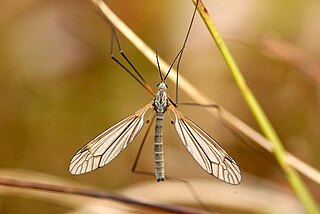 W
WTipula pruinosa is a species of true craneflies.
 W
WTramea basilaris, also known as the keyhole glider, red marsh trotter, or wheeling glider, is a species of dragonfly in the family Libellulidae. It is found throughout most of Africa, Arabia and in Asia. Similarly, this species is able to use the trade winds to reach the Caribbean and South Americas, where it was caught in Suriname, "guadeloupe" and "martinique".
 W
WVerrallia aucta is a species of fly in the family Pipunculidae. It is found in the Palearctic.